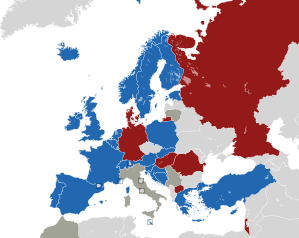| Eurovision Song Contest 1996 | |
|---|---|
 | |
| Dates | |
| Final | 18 May 1996 |
| Host | |
| Venue | Oslo Spektrum Oslo, Norway |
| Presenter(s) | |
| Musical director | Frode Thingnæs |
| Directed by | Pål Veiglum |
| Executive supervisor | Christine Marchal-Ortiz |
| Executive producer | Odd Arvid Strømstad |
| Host broadcaster | Norsk rikskringkasting (NRK) |
| Website | eurovision |
| Participants | |
| Number of entries | 23 |
| Debuting countries | None |
| Returning countries | |
| Non-returning countries | |
| |
| Vote | |
| Voting system | Each country awarded 12, 10, 8–1 points to their ten favourite songs |
| Winning song | |
The Eurovision Song Contest 1996 was the 41st edition of the Eurovision Song Contest, held on 18 May 1996 at the Oslo Spektrum in Oslo, Norway. Organised by the European Broadcasting Union (EBU) and host broadcaster Norsk rikskringkasting (NRK) and presented by Ingvild Bryn and Morten Harket, the contest was held in Norway following the country's victory at the 1995 contest with the song "Nocturne" by Secret Garden.
Thirty countries submitted entries to the contest, with a non-public, audio-only qualifying round held two months before the final to reduce the number of participants from 30 to 23. The entries from Denmark, Germany, Hungary, Israel, Macedonia, Romania, and Russia were subsequently eliminated, which resulted in Germany being absent from the contest for the first – and as of 2024 only – time.
The winner was Ireland with the song "The Voice", written by Brendan Graham and performed by Eimear Quinn. This gave the nation a record-extending seventh contest win, their fourth win in five years, with Graham also recording his second win as a songwriter in three years after having written the winning song at the 1994 contest. Norway, Sweden, Croatia, and Estonia took the remaining places in the top five, with Croatia, Estonia, and Portugal, which placed sixth, achieving their best results to date. This was the final contest where the results were determined solely by jury voting, with a trial use of televoting in the following year's event leading to widespread adoption from 1998 onwards.
